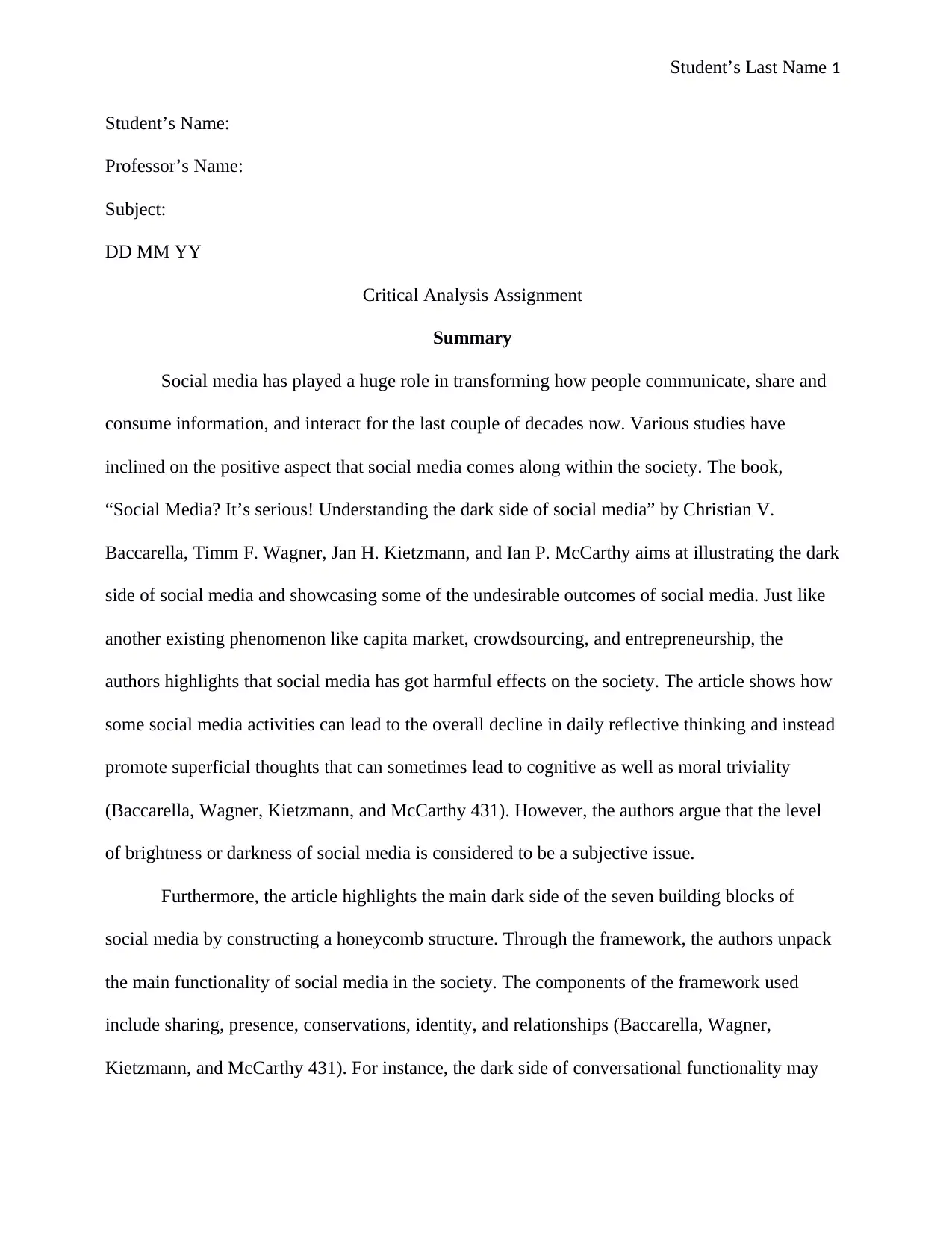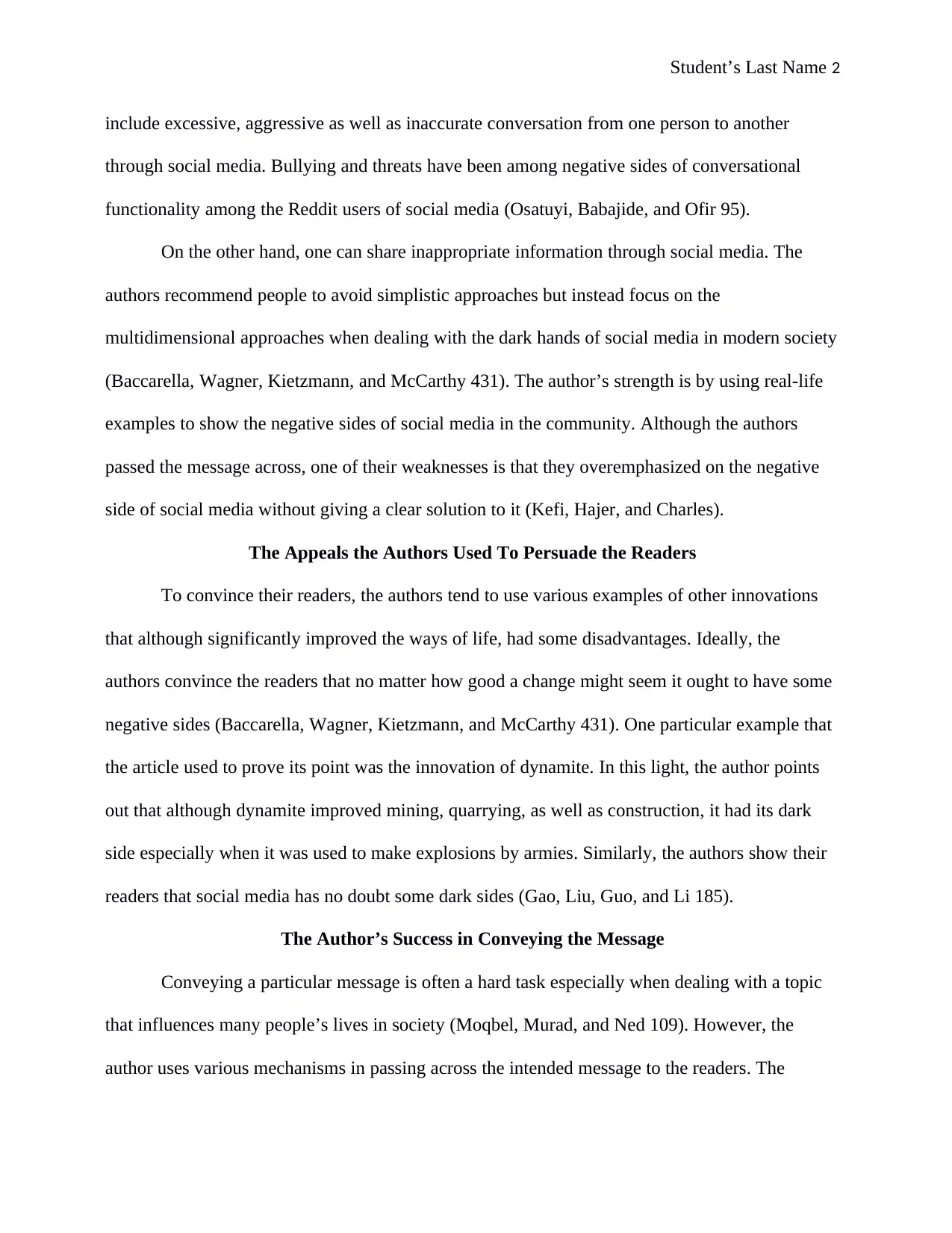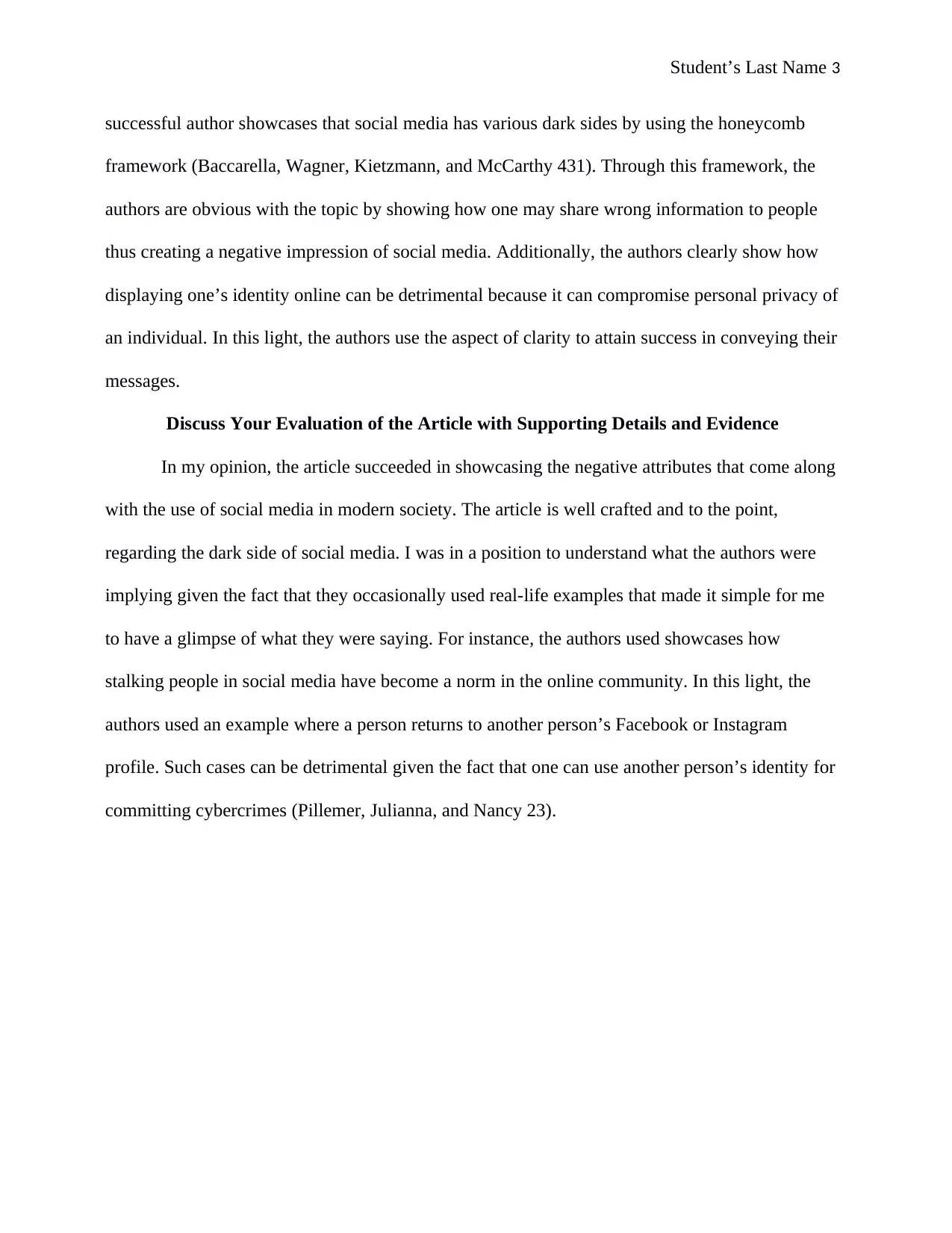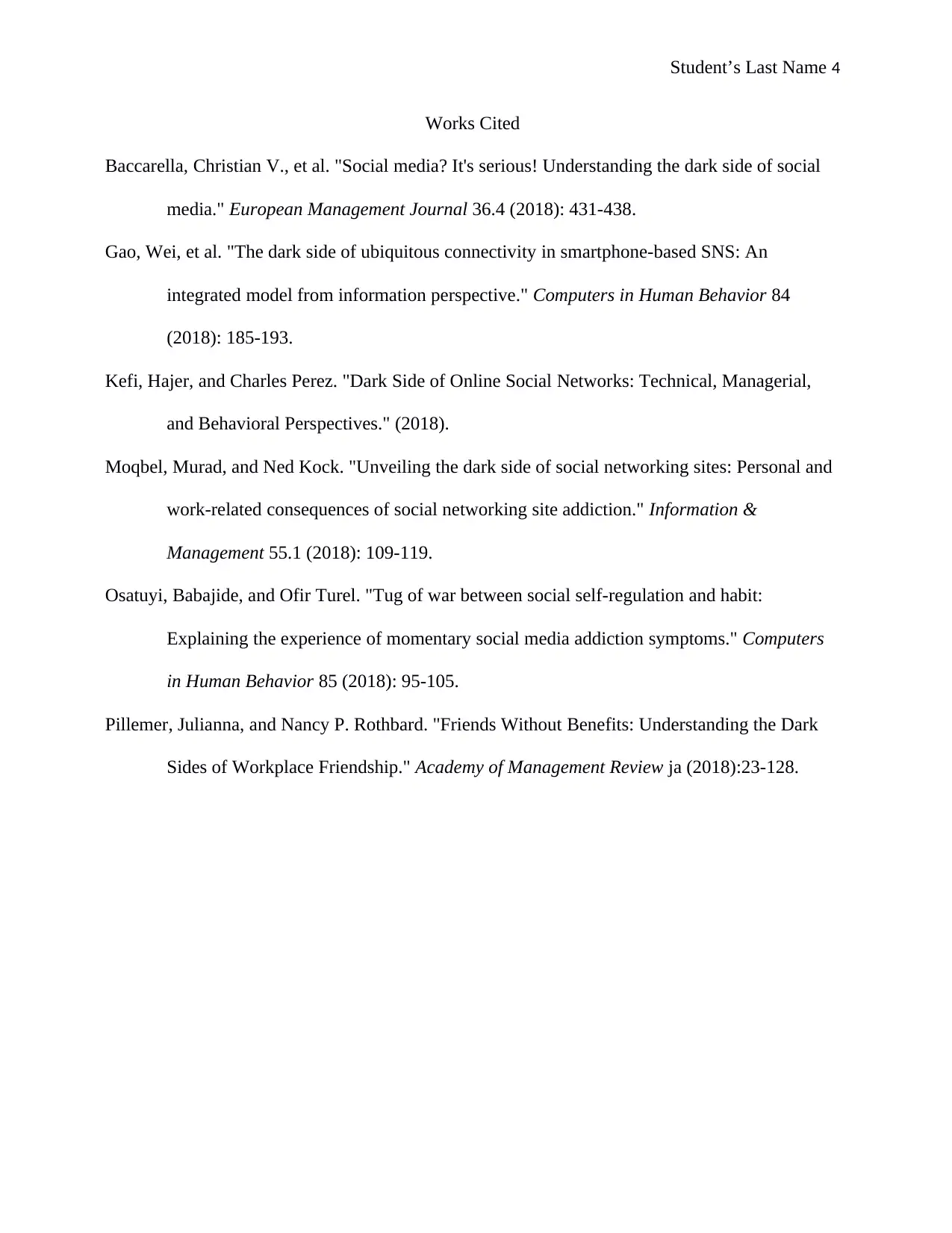Critical Analysis Report: Understanding the Dark Side of Social Media
VerifiedAdded on 2023/04/20
|4
|1179
|402
Report
AI Summary
This report presents a critical analysis of the article "Social media? It’s serious! Understanding the dark side of social media" by Baccarella et al. The analysis examines the authors' framework, which highlights the negative aspects of social media through a honeycomb structure, focusing on components such as sharing, presence, conversations, identity, and relationships. The report discusses the strengths of the article, such as using real-life examples, and its weaknesses, including an overemphasis on the negative aspects without offering clear solutions. It also evaluates the authors' persuasive techniques, such as drawing parallels with other innovations like dynamite, and assesses their success in conveying the message using the honeycomb framework to illustrate how sharing incorrect information can create a negative impression of social media and how displaying identity online can compromise personal privacy. The analysis concludes with a personal evaluation of the article's effectiveness in showcasing the negative attributes of social media in contemporary society.
1 out of 4








![[object Object]](/_next/static/media/star-bottom.7253800d.svg)